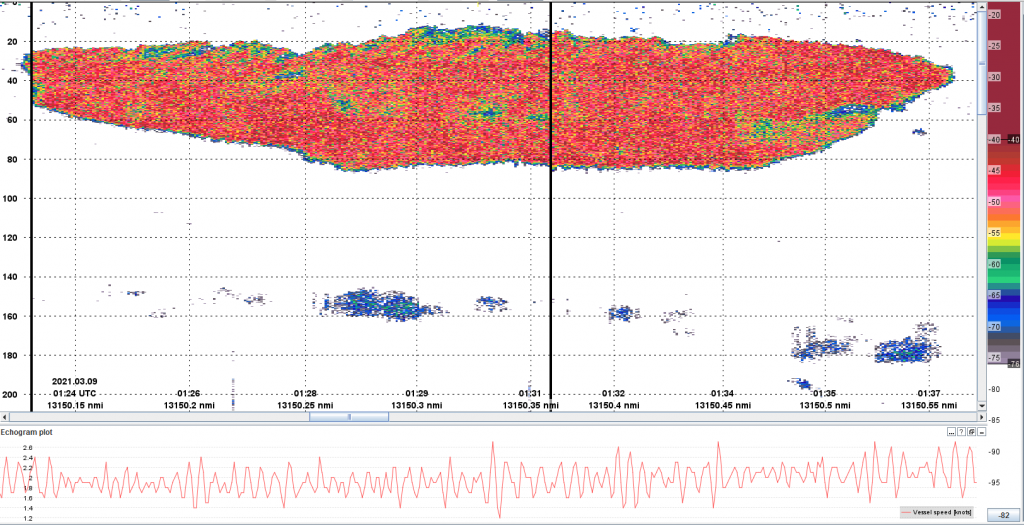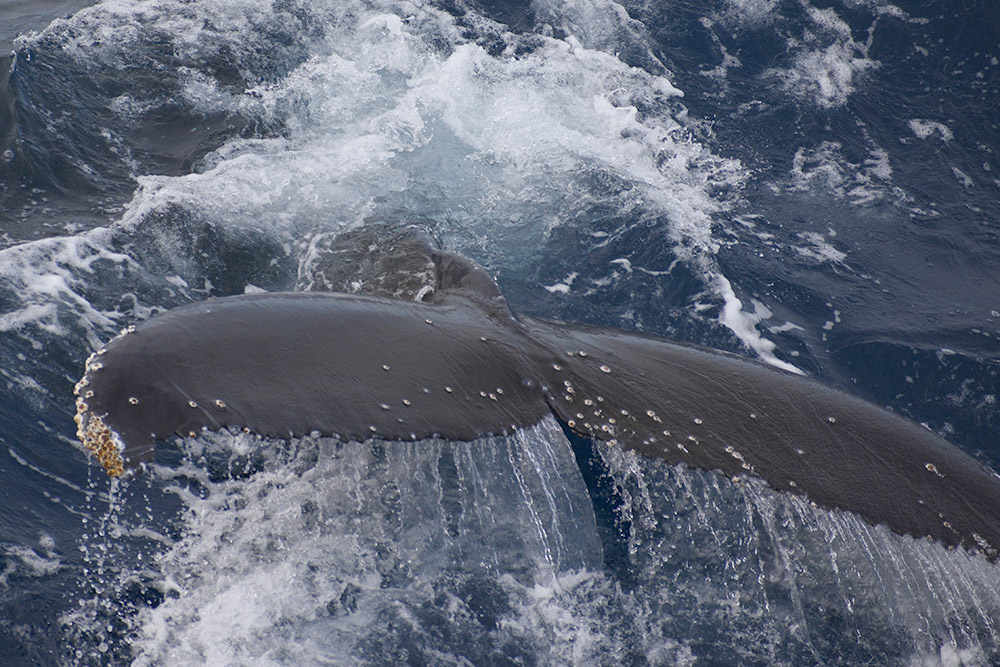Dreams come true!

It was meant to be a quiet day. Early on Tuesday, March 09, we finished Transect 5 and started our transit to Transect 6. Everyone was planning to relax and take a rest during this transit before diving into the most intense final transect.

Night shifters were enjoying their down time in the lounge watching Iron Man 3. The movie ended with a scene of Iron Man throwing his obsolete chest arc reactor into the sea. From that exact moment, something of a miracle began to unfold. A very long and thick krill swarm which appeared to be stuck to the surface materialised on the echogram! We are not making this up, this is what really happened!!
We quickly decided to conduct a target trawl. The trawl was a success. It was 6 am, still dark, and we had to wait for another few hours for the sun to come up if we were to conduct a swarm study. Surface swarms that form during night time generally migrate deeper or disperse with sunrise, meaning there is a chance that this swarm may dive deep out of the reach of the swam study camera (the system relies on natural light so we can only operate during daytime with swarms shallower than 60 metres).
It was the first time during this survey that we encountered such a dense swarm, ideal for a swarm study in good weather. This might be the first and the last opportunity for the conditions to align, as long as we do not lose the swarm. We just couldn’t let this opportunity go. We decided to conduct a detailed mapping of the swarm to characterise this swarm while waiting for the sunrise and hoping that we wouldn’t lose this swarm.
As we conducted the swarm mapping, the swarm became slightly deeper but also seemed to have increased its density and it took on the form of a giant red sausage on the echosounder screen, a giant red krill sausage. The sausage spanned depths between 20 to 50 metres, becoming even more suitable for a swarm study. As the sky became lighter, the predator observers informed the krill and the acoustics teams that there were many humpback whales actively feeding around the location of the sausage. The whales may have been bubble-net feeding, corralling krill closer to the surface? Who knows but it did appear that these whales were very likely the sausage crafters? When the initial mapping had been completed, the deployment position and the depth of the swarm camera system was decided, we reached the time for the shift change. Therefore, just as has been the case every twelve hours for the past 35 days, the baton was passed to the next shift team in this soon to be completed marathon relay event. The deck had been perfectly set by the night shift crew and the deployment and the recovery of the swarm study camera system was handed to the day shifters.

The swarm study was successfully conducted for over twelve hours at this site. One target trawl, two deployments of the swarm study camera system, two periods of swarm mapping with the echosounders (one before and one after the camera deployments), one CTD cast through the dense swarm to learn about the potential for dense krill swarms to influence oceanographic parameters.

The swarm cameras were checked straight after the recovery of two deployments, and yes, the cameras captured dense krill swarms! We are excited to conduct a detailed analysis of the footage collected. The swarm study collected data at various spatial scales (from the swarm scale down to the individual krill scale) as well as on a temporal scale (recording changes in swarm structure and swarm movement) all tightly associated with predator and oceanographic information.
Everyone from both shifts and all science teams, MNF support staff, and crew were involved in this study. It was an entire TEMPO Team endeavour and a very fitting way to set the tempo for what will be our final relay legs of the TEMPO voyage as we launch into Transect 6.
So & Rob



